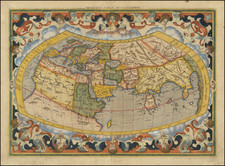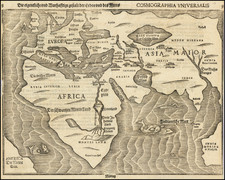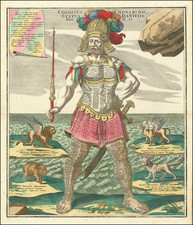Rare allegorical etching depicting Archduke Charles of Austria as Charles III of Spain, Holy Roman Emperor, engraved by Romeyn de Hooghe.
The image shows the Archduke Charles arming himself with the sword and shield of Minerva and presented as the heir to the Spanish monarchy. The ruler is surrounded by allegorical gods and figures of Asia, Africa and America bestowing their domestic riches upon him.
To the right of the Archduke is a globe positioned to display the Americas, on which a banner is draped reading "Alter Erit Nunc Tiphys" (One Will Now Arise). Each figure is numbered to correspond with a separately printed letterpress table (not present here, but seen complete in an example at the Rijksmuseum).
The words are part of hexameters 34-36 of Virgilian chant and are used now to predict the new company that will once again gather the heroic Argonauts in a second Argo ship, piloted by this new helmsman Tifis (Archduke Charles).
Nicolaas Visscher II (1649-1702) was a prominent Dutch cartographer and publisher during the late 17th century. He was the grandson of Claes Janszoon Visscher and the son of Nicolaes Visscher I, both of whom were also renowned cartographers in their own right. After his father's death in 1679, Nicolaas Visscher II took over the family's map publishing business.
In 1680, he married Elizabeth Verseyl from Gouda, and in 1682, he obtained a new privilege from the States of Holland and West Friesland to protect his maps and publications from being copied. Visscher II continued the family tradition of producing high-quality maps, atlases, and globes, often with elaborate and decorative elements. He maintained the Visscher family's reputation for accuracy and craftsmanship in the competitive world of Dutch cartography until his death in 1702. After his death, his widow, Elizabeth, and later his son, also named Nicolaas, continued the business until around 1726.









![[ Map Game Board ] Wallis's New Game, exhibiting a Voyage round the World.](https://storage.googleapis.com/raremaps/img/small/98593.jpg)


![[Santa's Telegram]](https://storage.googleapis.com/raremaps/img/small/68586.jpg)
![[ Florida Native Americans Declaring War ] Bellum denunciandi ratio. XXXIII.](https://storage.googleapis.com/raremaps/img/small/98006.jpg)
